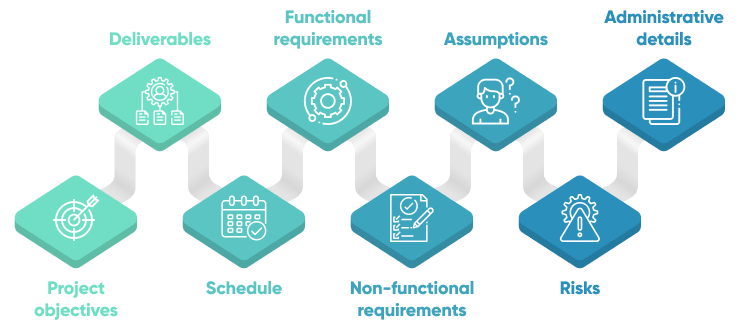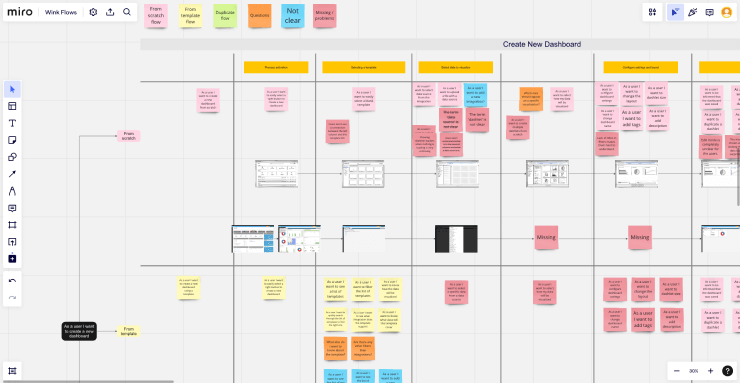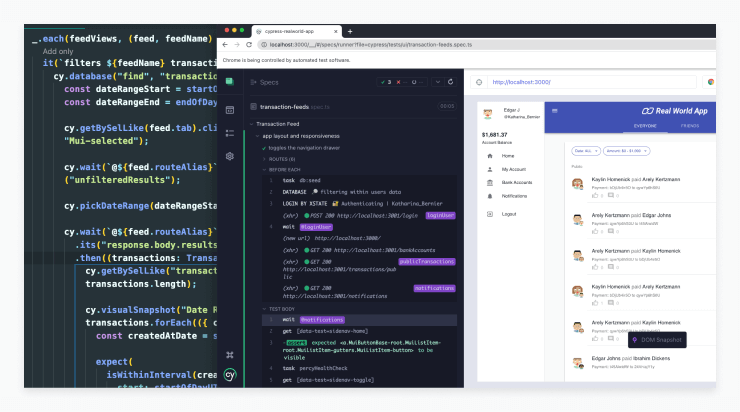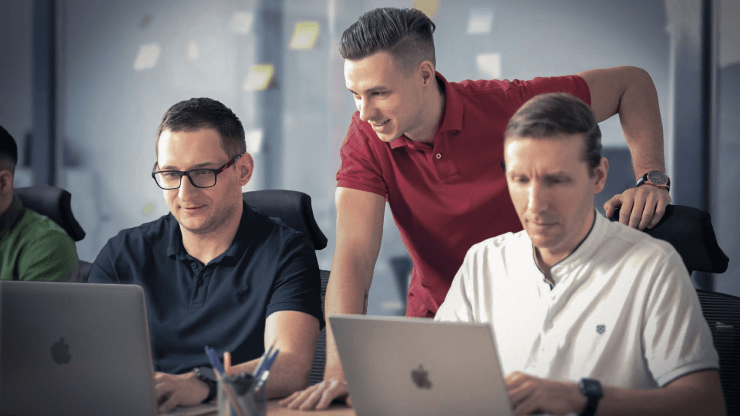Software development is a complex and dynamic process that involves many uncertainties and challenges. Software development risks can have serious consequences for software development projects, such as:
- Software failure - when software doesn't meet user requirements, is not functional, or has defects that make it unusable
- Project delay - when the software development process exceeds the planned schedule, causing late delivery and missed market windows.
- Cost overrun - when the software development goes over budget or requires more resources than initially planned.
- Customer dissatisfaction - when the developed software doesn't align with customer expectations, needs, or preferences.
If you are a business or IT leader looking to understand the risks associated with software development projects, you need to know what technical, project, and budgeting risks exist so you can plan accordingly and mitigate them. In this article, we’ll equip you with knowledge to identify, assess, and manage such risks, so you can confidently deliver successful software every time.
- Who is responsible for managing software development risks?
- 13 top software development risks & how to avoid them
- 1. Unproven software concept
- 2. Overly complex project idea
- 3. Lack of stakeholder support
- 4. Inexperienced development team
- 5. Ineffective project management
- 6. Unclear or conflicting requirements
- 7. Unreliable technologies & tools
- 8. Improper security measures
- 9. Neglect of the UI/UX design
- 10. Inadequate testing
- 11. Inheriting technical debt
- 12. Communication breakdowns
- 13. Changes in market needs
- Conclusion
Who is responsible for managing software development risks?
The responsibility for managing software development risks can vary based on the company structure and the development approach the team takes. In organizations with internal software development team, roles such as project managers, software developers, QA teams, business analysts, and stakeholders are typically responsible for risk management.
When working with a software development outsourcing company, both the client and the vendor share the responsibility of managing risks. The client provides clear software requirements and communicates expectations, while the vendor utilizes their expertise to identify and mitigate risks. Regardless of the structure, effective risk management relies on clear communication and collaboration among all stakeholders.
What you need to know:
- In organizations with internal development teams, roles such as project managers, software developers, QA teams, business analysts, and stakeholders typically share the responsibilities of risk management.
- When working with a software outsourcing company, typically both the client and the vendor share the responsibility for managing risks.
13 top software development risks & how to avoid them
With an understanding of who is responsible for managing software development risks, let's now delve into the top 13 risks in software development that every team should be aware of. By identifying these risks and implementing the mitigation strategies we provide in this article, your team will be able to more effectively manage software development risks and improve the success rates of your software projects. With that in mind, let’s jump right in and look at a very common risk of a software concept being unproven in the market.
Unproven software concept
What it is: Most software projects will be to some degree unproven. Afterall, if the exact software you want to build already exists, you probably wouldn’t be developing it! However, the software development project will be more risky the more unproven the software concept is. If the concept hasn’t been validated in the market, hasn’t been proven with a proof of concept, or basic prototype, you’re going to have more technical risks and market acceptance risks.
Potential impact: If the software concept is unfeasible or doesn't resonate with users, the project could fail, leading to wasted resources and potential damage to the company's reputation. Technical risks can also be high if little has been done to prove the technical feasibility of the software development project, leading to extended development timeframes if major issues are uncovered late in the process.
How to Avoid:
- Feasibility Study: Conduct a detailed feasibility study to assess the technical, economic, and market viability of the new concept and help mitigate software development risks.
- Build a Proof of Concept (PoC): A PoC allows you to demonstrate the functionality of your idea in a simplified version, providing the opportunity to validate the concept's practicality and identify any major issues early.
Read More: 8 Step Proof of Concept Template – Validate Your Idea Fast
Overly complex project idea
What it is: It can be tempting to add every possible feature to your software product, but an overly complex project idea can introduce numerous challenges, making the project harder to manage, increasing the likelihood of errors, and potentially leading to miscommunications.
Potential Impact: Excessive complexity can lead to increased development time, cost overruns, difficulty in identifying and resolving issues, and decreased user friendliness. It can also lead to increased technical debt if short-term fixes are implemented by the software development team instead of sustainable solutions.
How to Avoid:
- Address one user need: Hone in your software idea and remain focused on a central user need. Anything outside of these bounds should not be included in the project if you want to minimize the software project risks.
- Build an MVP: Start with a minimum viable product (MVP) that includes only the most essential features. This helps keep the project focused and manageable, reducing complexity. An MVP also provides valuable feedback that can guide further development.

Read More: How to Build a Minimum Viable Product in 5 Steps [+ Template]
Lack of stakeholder support
What it is: It’s common for one person or a small group of people to champion a software project, but stakeholder support beyond this small group is essential for project success. Levels of management and other teams that will be affected by the software should be included from the start.
Potential Impact: Without stakeholder support, the software development project can face delays, budget shortfalls, and even cancellation. It could also lead to a lack of clarity in direction and decision-making, lower team morale, and ultimately, a failure to meet project objectives.
How to Avoid:
- Early engagement: Involve stakeholders from the beginning and keep them engaged throughout the project development. Share project plans, progress, and challenges regularly to maintain transparency.
- Clearly define roles & responsibilities: Establish and communicate clear roles and responsibilities for project approval and decision-making processes. This can help reduce confusion and also ensure necessary actions and approvals occur in a timely manner.
- Regular communication: Maintain regular communication with stakeholders to keep them updated about project progress, address any concerns promptly, and reinforce their importance to the project's success.
Read More: Software Development Planning - Perfect Project Plan in 10 Steps
Inexperienced development team
What it is: Every software project necessitates a distinct combination of technical skills, domain knowledge, and soft skills to be executed effectively. When a team lacks experience in any of these key areas, it can open you up to increased risks in software development.
Potential Impact: The impact of an inexperienced software development team can be far reaching. Depending on the project and the exact lack of skills, it can manifest as subpar product quality, missed deadlines, and inefficient use of resources, ultimately impacting customer satisfaction and a company's bottom line.
How to Avoid:
- Assess technical skills: By thoroughly evaluating the technical proficiency of team members and comparing it against the project requirements, organizations can ensure they have the necessary expertise to move forward. If there are skill gaps, teams might consider software team augmentation.
- Hire experienced software development vendors: Collaborate with a seasoned software development vendor who has a proven track record in the software development industry and familiarity with the necessary technologies. Their expertise can be instrumental in steering the project effectively and helping to minimize common risks.
Read More: How to Choose a Software Development Company in 10 Steps
Ineffective project management
What it is: Poor project management can manifest as inadequate project planning, lack of clear communication, inefficient resource allocation, and insufficient monitoring and control.
Potential impact: The impact of ineffective project management can be far-reaching. It can lead to missed deadlines, budget overruns, compromised quality, and strained team dynamics. Additionally, ineffective project management can result in a loss of stakeholder confidence, damaged reputation, and even project failure.
Strategy to avoid:
- Hire an experienced project manager: Engage an experienced project manager who possesses the necessary leadership skills, domain knowledge, and expertise in software development project management. A competent project manager will help identify potential risks and manage them throughout the project.
- Embrace agile project management: Adopting Agile methodologies, such as Scrum or Kanban, can enhance project management effectiveness. These methodologies promote iterative development, frequent communication, and collaboration, allowing for better adaptation to changing requirements and early detection of internal and external risks to the software project.
Read More:
6 Steps to Creating a Successful Requirements Management Plan
Estimating Software Projects — Agile vs Traditional Estimates
Unclear or conflicting requirements
What it is: Unclear or conflicting requirements occur when there's ambiguity or disagreement about the project's goals, functionalities, or performance criteria. This software development risk is particularly prone to occur when there are many stakeholders involved or if a project idea is not solidified before requirements gathering begins.
Potential Impact: Ambiguous or conflicting requirements can cause project delays, increase costs due to rework, reduce team morale, and result in a final product that fails to satisfy the stakeholders' needs or market demands. It can also lead to scope creep, where the project extends beyond its original objectives.
How to Avoid:
- Create a detailed scope of work (SOW): Develop a detailed SOW that outlines the project's objectives, deliverables, timelines, and acceptance criteria. This provides a clear roadmap for what needs to be achieved, minimizes the risk of poorly defined or conflicting requirements and will also help the software development company (if you choose to work with one) have a clear idea of what you want to build.
- Improve your requirements documentation process: Implement a structured process for gathering, documenting, and validating requirements. Using a strategy such as the MoSCoW technique to help organize and prioritize requirements systematically.

Read More:
Software Development Scope of Work [Template, Tips & Tools]
8 Powerful Methods for Better Requirements Elicitation
Unreliable technologies & tools
What it is: Technology changes fast, and tools that used to be standard are quickly outdated. Using unreliable, untested, or outdated technologies as part of software implementation can add significant risks to the project.
Potential Impact: Relying on unreliable technologies can cause system instability, data loss, or security breaches. It can lead to increased time and effort in troubleshooting and resolving issues, delaying the project timeline. In some cases, it could necessitate significant changes to the project's codebase, thereby increasing costs and causing further delays to the development process.
How to Avoid:
- Design a suitable software architecture: Collaborate with an expert to establish an effective software architecture before beginning development. This will form a solid foundation for your project and help prevent technical issues down the line.
- Evaluate technologies: Prior to selecting a technology or tool, conduct a thorough evaluation to understand its reliability, community support, compatibility with your existing tech stack, and whether it meets your project's requirements.
- Develop a prototype: Develop a prototype or proof of concept using the chosen technologies to validate their feasibility and compatibility with your project needs.
Improper security measures
What it is: Often, the focus of software development is heavily tilted towards functionality, speed of delivery and user experience, while security is seen as an afterthought. However, security risks can be significant, arising from poor coding, weak data protection, improper user access controls, not testing for vulnerabilities, using risky external components, incorrect software setup, neglecting updates, and not having a plan for security breaches.
Potential Impact: Lack of proper security measures can lead to serious consequences such as data breaches, unauthorized access, and the potential loss of sensitive information. These incidents can harm a company's reputation, result in significant financial losses, and erode user trust.
How to Avoid:
- Implement DevSecOps practices: DevSecOps is the practice of integrating security into the software delivery model. It ensures that security is incorporated from the earliest stages of the software development lifecycle, thus reducing the likelihood of vulnerabilities that reach the production environment. With DevSecOps, security risk management becomes a shared responsibility among all team members, fostering a culture of security mindfulness.
- Use secure technologies: Choose technologies and platforms known for their strong security features and have robust community support. This can help ensure your software is built on a secure foundation and can effectively resist potential attacks.
Neglect of the UI/UX design
What it is: Overlooking the user experience can occur when the focus of software development is excessively placed on technical aspects and functionality, while not considering how intuitive, accessible, and engaging the software is for the end-users.
Potential Impact: A software product with poor UI/UX design can result in user dissatisfaction, reduced user adoption, and potentially lost revenue. It can also damage the brand's reputation and incur additional costs for redesign and remediation.
How to Avoid:
- Conduct user research: User research is a vital first step in ensuring a successful UI/UX design. This process involves understanding the needs, preferences, and behaviors of your users, allowing you to design a product that meets their needs and exceeds their expectations.
- Create Storyboards: Storyboarding is a method of visually portraying user interactions with the software. It helps to visualize the journey users take when using the product, identify any potential issues, and optimize for the best user experience.

Read More: UI Design Process - 7 Easy Steps to Make Great UIs Faster
Inadequate testing
What it is: Testing should be an integral part of software development from the planning phase, with scenarios identified early and testing conducted continuously throughout the development lifecycle to catch issues sooner. Inadequate testing can arise if it's not properly integrated into the project plan, or if there's a lack of time, resources, skills, or adaptability to project changes, potentially leading to unidentified issues in the final product.
Potential Impact: Software released with bugs or other issues can lead to a poor user experience, potential security vulnerabilities, and harm to the reputation of the business.
How to Avoid:
- Develop a comprehensive QA test plan: A detailed and comprehensive test plan is crucial to ensure every component of the software is thoroughly checked. It can serve as a guide for the QA team to conduct systematic and efficient testing.
- Adopt automated testing: Automated testing can supplement manual testing efforts, providing a fast and efficient way to run repetitive tests and identify issues. This allows more focus on complex testing scenarios in manual testing. Consider tools such as:
- Cypress: A front-end tool for fast and reliable testing in a browser, providing real-time tests and easy debugging.
- Playwright: A Node.js library for automating multiple browsers, supporting a range of features and conditions, ideal for comprehensive browser coverage.
- Selenium: An open-source tool for automating web browsers across platforms, suitable for projects with complex workflows, including mobile web app testing.

Inheriting technical debt
What it is: A software project can inherit technical debt when shortcuts were taken during development of a previous version of the software. Other sources of inherited technical debt can include reliance on outdated or complex technology, poorly documented code, and dependencies on third-party components that are no longer supported or maintained.
Potential Impact: Technical debt can lead to a variety of risks in software development, such as making the software more challenging to maintain or extend, increasing the risk of bugs or system failures, and resulting in longer development times. Over time, the cost to fix these issues can exceed the cost of writing good code in the first place.
How to Avoid:
- Assess technical debt upfront: Before starting a new project, conduct an audit of the existing software infrastructure to understand the extent of the technical debt. Identify areas that need improvement or refactoring.
- Plan for debt reduction: Make a plan for reducing technical debt as part of your project. This could involve refactoring, upgrading systems, or allocating time for bug fixes and improvements.
Read More: 10 Proven Steps for Modernization of Legacy Applications
Communication breakdowns
What it is: Communication breakdowns in software development projects can occur when development team members do not communicate effectively. Regardless of how experienced a team is, this will always be a risk but it can be a particular challenge for team members who haven’t worked together before, when a project is outsourced to an inexperienced development team, or when a manager is inexperienced in managing remote-first teams.
Potential Impact: Poor communication plan for a project can lead to misaligned expectations, unclear roles, and responsibilities, and confusion about project goals or tasks.

How to Avoid:
- Utilize communication tools: Use effective communication tools designed for team collaboration. These tools should support various types of communication, including direct messaging, group chats, video conferencing, and task tracking. Consider tools such as:
- Jira: This platform allows for effective tracking and management of tasks, enhancing collaboration and coordination across teams, thus improving project visibility and efficiency.
- ClickUp: With features such as task management, time tracking, and document sharing, it assists teams in streamlining workflows, maintaining documentation, and keeping everyone updated on their tasks and deadlines.
- Slack: Serving as a central communication hub, it fosters real-time collaboration, information sharing, and integration with other tools, thus promoting a more unified and agile team environment.
![]()
Read More: Managing Remote Engineering Teams — Best Practices & Tools
Changes in market needs
What it is: Changes in market needs can occur when there are shifts in customer preferences, industry trends, regulatory landscape, or technological advances that occur during the software development process. This is particularly common in industries that are moving quickly such as ai software development.
Potential Impact: If a project fails to align with current market needs, it risks becoming redundant or uncompetitive. This can lead to reduced market share, lower user adoption rates, and ultimately, financial losses.
How to Avoid:
- Embrace agile methodologies: Agile methodologies allow for greater flexibility and adaptability throughout the development process. They enable teams to adjust the project direction based on regular feedback cycles and iterative progress, which can better accommodate changes in market needs.
- Incorporate flexibility into the design: Building flexibility into the software design can make it easier to adjust features or functionalities as market needs change. This could involve adopting modular architectures, using scalable technologies, or implementing forward-compatible solutions.
Read More: Agile Outsourcing - 12 Principles To Guarantee Project Success
Conclusion
Managing software development risks requires the concerted effort of the entire team, including business leaders, project managers, developers, and other stakeholders. Having a robust understanding of these risks allows for the implementation of proactive measures that ensure the delivery of high-quality, user-friendly, and secure software. With this knowledge, businesses can not only avoid project delays, poor software cost estimations, and customer dissatisfaction but also foster a culture of excellence and success in their software development projects.
Looking for a software development partner to help you minimize development risks? At SoftKraft we work closely with our clients to understand your unique business challenges, map out a strategic solution, and build software to your specifications so you can maximize your ROI every time. Contact us today.







